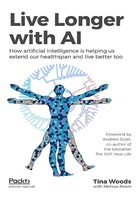
AI and understanding health and aging
Aging is an almost universally unifying feature possessed by all living organisms, tissues, and cells, which I will describe in the next section.
Insilico Medicine uses GANs and RL to research " biomarkers of aging" and to deploy novel methods for analyzing the most important features underlying the aging process.
These techniques can also produce diverse synthetic molecular and patient data, and help to identify novel biological targets and molecular compounds with desired properties in much less time than traditional methods used by pharmaceutical companies.
In fact, using these techniques, Insilico Medicine managed to generate and validate a novel small molecule in just 46 days, designing the drug from scratch—compared to in two to three years by pharmaceutical companies following "accepted" practice. This was considered the "AlphaGo" moment in health and was published in Nature Biotechnology on September 2nd, 2019[13].
Insilico's work shows that AI can reduce the 99% preclinical failure rate in pharmaceutical and expedite the time it takes to go from R&D in drug discovery to real treatments. Not surprisingly, these developments are all of high interest to pharmaceutical companies that are threatened themselves by technological disruption, especially as AI talent is being siphoned by tech companies.
Modern AI will continue to drive the longevity[14] biotechnology industry, and contribute to the convergence[15] of countless areas of research across the course of a human life. Better use of public data, combined with digital tools and an understanding of the wider determinants of health, will give us the ability to better identify risks and help the people most in need before they become patients, which is a big focus of this book.
At the moment, AI devices work independently of one another, with data flowing through each device. The true power of AI can be unleashed when these devices are connected and algorithms can analyze datasets across these devices. The datasets collected from multiple sources can be described as " multimodal datasets." When these multimodal datasets are consolidated into one model, and algorithms can generate completely novel insights, spotting the patterns that would otherwise not be spotted in individual datasets, this is called "multimodal learning."
The two main benefits of multimodal learning lie in more robust predictions (since multiple sensors analyzing the same information can act as a double-check and make predictions more precise) and new pattern recognition (by combining multiple sensors).
The potential of multimodal learning to develop predictive and preventative health strategies is colossal. Insights from genetics, biological, behavioral, environmental, and financial data are currently under-utilized and there are significant opportunities to use AI and multimodal learning to predict disease and incentivize healthier living through harnessing such "life" data.
The opportunity for tech developers is getting these devices to learn, think, and work together to produce novel insights. This is the basis of research in aging biomarkers, for example, which could lead to the development of strategies to minimize the risk of dementia, or, indeed, cure it.
There are billions of petabytes of data flowing through AI devices every day and the volume will only increase in the years to come, which is why edge and quantum computing are so important. " Edge computing" is a distributed computing model that brings computation and data storage closer to the location where it is needed, such as devices and sensors. This dramatically increases processing times and will help with managing the proliferation of data that will only increase in years to come.
Indeed, 2020 marks the start of what's been called "our trillion-sensor world[16]" and data is quite clearly fueling the economy—healthcare, finance, insurance, education, and beyond. Big Tech knows this, which is why companies are investing so heavily in health.